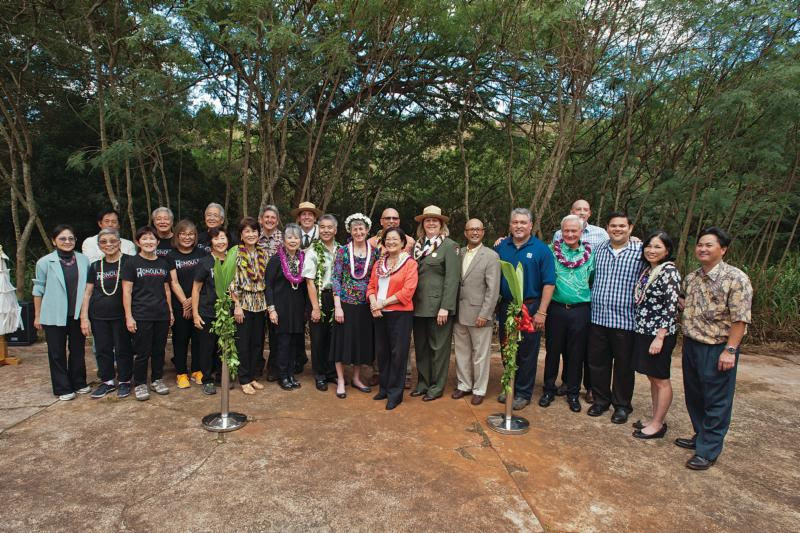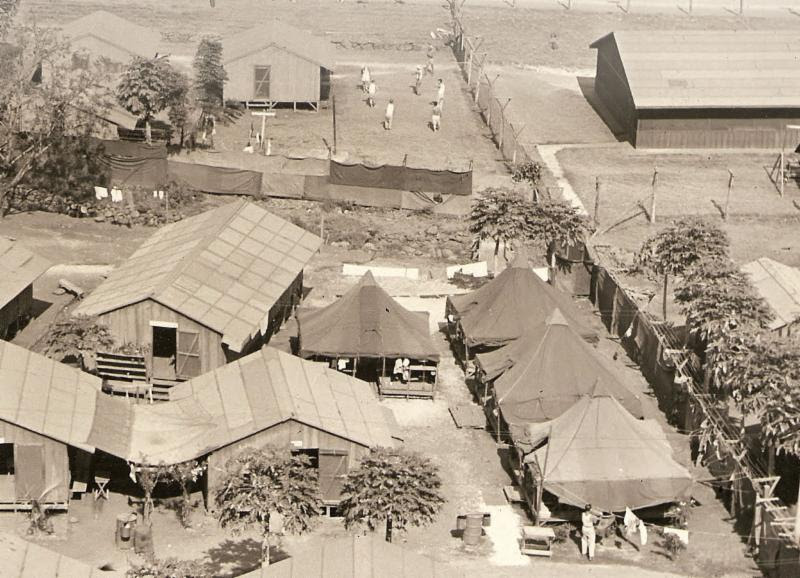September 14, 2015
Earlier this month, the National Park Service (NPS) released the Honouliuli Gulch and Associated Sites Special Resource Study, which recommends that the former internment camp site on the Hawaiian island of O’ahu be designated a National Park Service unit.
Although designation of the camp as an NPS unit was advanced by a February 2015 Presidential proclamation designating it as such, the NPS study is a worthwhile read for anyone interested in the Honouliuli camp. The camp, which opened in March 1943, was the largest and last-occupied World War II-era civilian confinement site in the Hawaiian Islands. The site also served as the largest prisoner-of-war (POW) camp in wartime Hawai’i, holding more than four thousand soldiers and labor conscripts from Italy, Japan, Korea, Okinawa, and Taiwan.
Densho Content Director Brian Niiya commented on the origin and the significance of the report:
“The study originated from legislation passed by Congress in 2009 directing the National Park Service to conduct the resource study to determine the history and status of the Honouliuli site and other Japanese American World War II confinement sites in Hawai’i and to recommend the best way of preserving the sites. It was eventually introduced on the Senate side by Daniel Inouye and on the House side by Mazie Hirono. Pretty much all of the stakeholders at the time including Monsanto, which owned the land and had expressed willingness to donate it for the sake of historic preservation, favored eventual NPS management of the site. All were also cautiously optimistic in part because much of the historic and archaeological research had already been conducted by archaeologists Jeff Burton and Mary Farrell, because of the generally untouched state of the site itself, and because of the unique history of internment in Hawai‘i that was largely untold elsewhere. Though it took a little longer, the NPS came to the same conclusion. The nearly 300-page report includes great information on Honouliuli and the other confinement sites in Hawai’i, including their histories, illustrated with photographs and maps, making broad assessment of the status, condition, and significance of each. The report includes many photographs and maps of the sites.”
The report concluded that the “incarceration of Japanese Americans and others during World War II on the mainland and in Hawai’i are nationally significant events that shape our understanding and commitment to civil liberties and the fair treatment of all citizens, regardless of race. By identifying the commonalities and distinctions between mainland and Hawai’i stories, this study concludes that the internment in Hawai’i is of national significance distinct from the mainland incarceration. Through it, we are able to more fully understand the abrogation of civil liberties that occurred in the U.S. and its territories.”

Upon the spring 2015 designation of the site as an NPS unit, Sen. Mazie Hirono said, “The stories of the innocent Hawai’i civilians detained at Honouliuli during World War II cannot be forgotten, and as a national monument, the Honouliuli Internment Site will be an ever-present memorial of an important but often forgotten part of our nation’s history. Preserving the site has long been a priority for our Hawai’i delegation—from Sens. Inouye and Akaka to our current delegation—but our work is not yet done. My hope is that Honouliuli will be preserved in a way that visitors will get a sense of what this dark period of our country’s history was like and acknowledge that it should never be repeated.”
We look forward to further development at the Honouliuli site, as the NPS begins the long process of making the site publicly accessible as a means of telling its unique and still little known story.
You can download the full report here.
